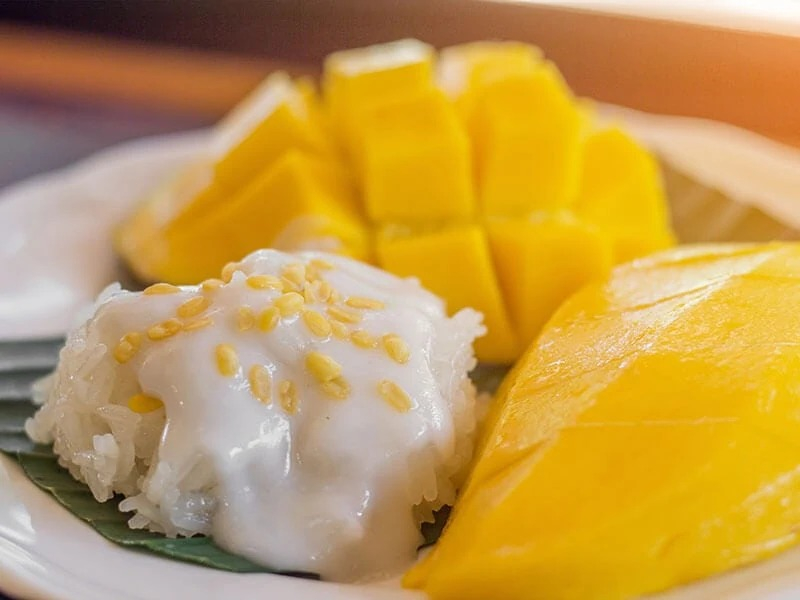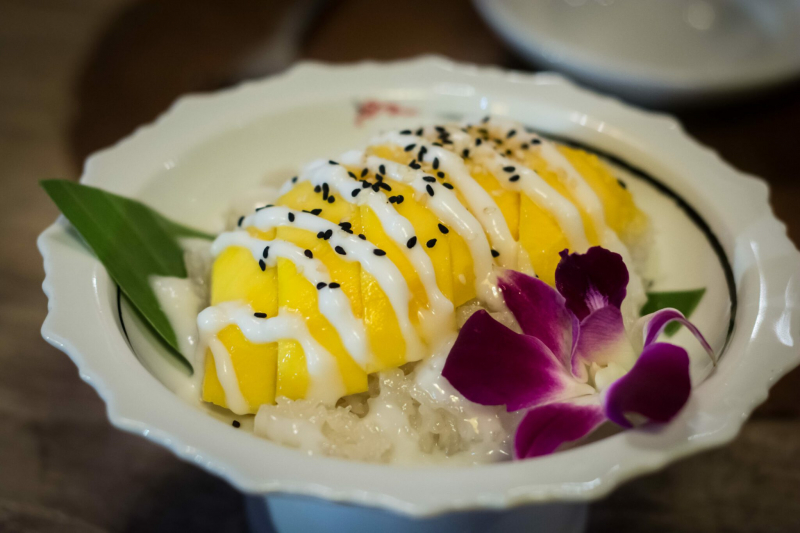Bey Dom Neib
When summer hits Cambodia, the markets overflow with the rich yellow of ripe mangoes. Amidst the myriad of ways to relish these mangoes, there's one dish that stands out distinctly - Bey Dom Neib. This dish celebrates the harmonious fusion of sweet, succulent mango slices and the creamy texture of coconut-infused sticky rice.
The preparation of Bey Dom Neib showcases the meticulous nature of Cambodian culinary practices. The sticky rice undergoes a thorough soaking process, spanning several hours. This ensures every grain softens to perfection. After soaking, the rice gets steamed. As steam rises, the grains swell up. It absorbs moisture and achieving that signature sticky consistency.
But that's not where the magic ends. Warm steamed rice is then married to a mix of rich coconut milk and sugar. This infusion transforms the humble sticky rice into a sweet and creamy delight. As it cools down, the rice, dense and rich, often gets shaped into enticing mounds or delicate balls. Some chefs even place them in decorative bowls, adding an aesthetic appeal.
Now, the stage is set for the star – the mango. Only the ripest, sweetest mangoes make the cut. They're peeled and sliced, their vibrant yellow contrasting beautifully with the creamy white of the rice. When these two come together on a plate, it's a match made in culinary heaven.
Eating Bey Dom Neib is an experience in itself. The first bite introduces you to the sweet texture of the rice and the juicy freshness of the mango slice. As these flavors play on your palate, it becomes clear why this dish is a summertime favorite. In street stalls, where vendors serve them fresh, often garnishing with a sprinkle of sesame seeds or even a drizzle of extra coconut milk.
Key Takeaways:
- Origin: Traditional Cambodian dessert
- Flavor Profile: Sweet and creamy, complemented by the freshness of ripe mangoes.
- Ingredients: Sticky rice, coconut milk, sugar, ripe mangoes.
- Unique Aspect: The harmonious blend of mangoes and coconut-infused sticky rice.












